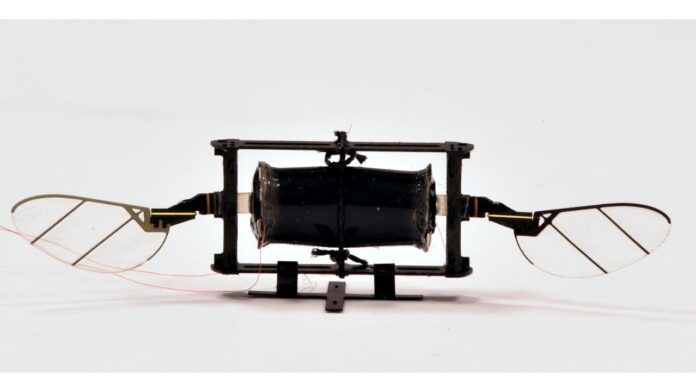Insects may be tiny, but they’re built to take a beating. While many insects can survive frequent collisions—even bumblebees are known to hit obstacles about once every second—miniaturized technology often falls short in durability. Traditional designs for small drones have suffered from fragility, especially as essential components like motors lose both power and strength when downsized.
Previous iterations from MIT’s lab utilized hard ceramic materials to get the drones airborne. However, those materials couldn’t reliably handle the kind of impacts that naturally occur in flight. Recognizing this challenge, MIT Assistant Professor Kevin Yufeng Chen and his team have turned to a more flexible approach.
Their latest models, which the lab likens to “a cassette tape with wings,” incorporate soft actuators crafted from rubber cylinders coated with carbon nanotubes. These actuators rapidly elongate—up to 500 times per second—when an electrical current is applied, driving the wing movements that allow the drones to fly. Weighing in at around 0.6 grams, similar to a large bumblebee, these drones are impressively lightweight.
There are still hurdles to overcome, however. Currently, the drones must remain connected to a power source to function, which can make their operation somewhat unwieldy. The team is actively working on improvements, including experimenting with new designs that mimic the shape of a dragonfly.
If future versions can operate untethered and incorporate imaging capabilities along with a more robust power supply, the applications for these tiny drones could be vast—from detailed inspections in hard-to-reach areas to roles in pollination and search and rescue missions.





